Elephants! Even though these largest existing land animals are loved, revered, and respected by people and cultures worldwide, they are actually close to the edge of extinction. The escalation of poaching, habitat loss, human-elephant conflict, and mistreatment in captivity are just some of the threats to both African and Asian elephants. So, we urgently need to take action to protect these amazing (and cute!) animals. Here are 20 amazing elephant facts.

Elephant facts
1. Elephants are the largest existing land animals
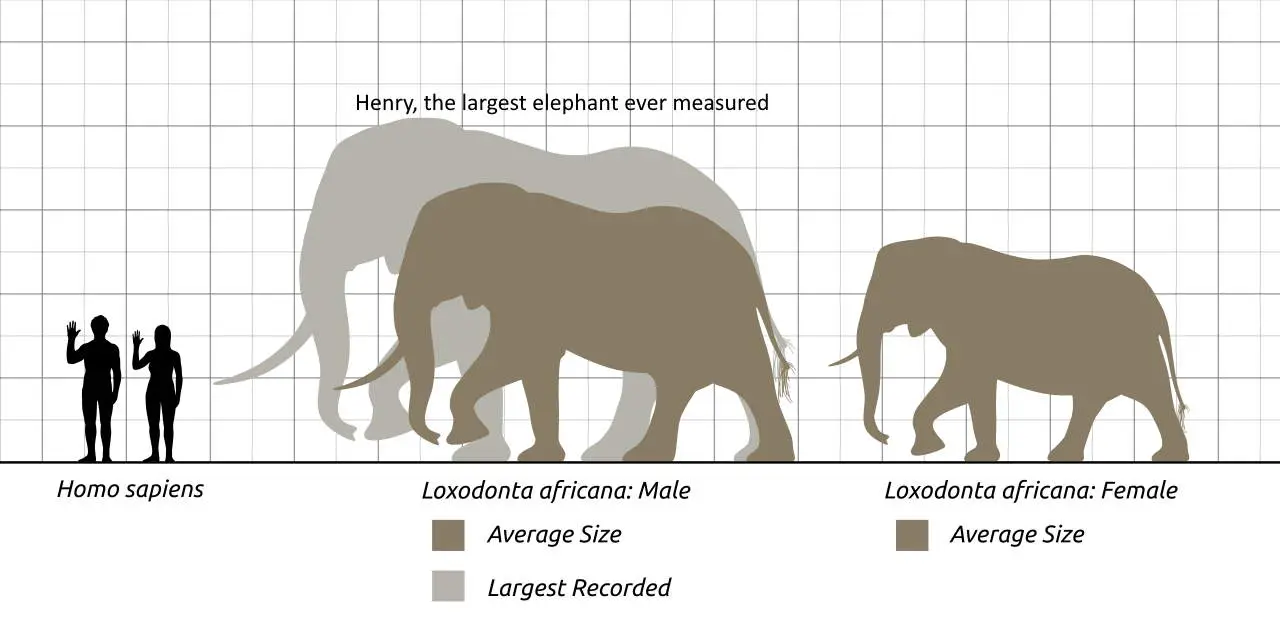
Elephants are the largest existing land animals, and African bush elephants are the largest elephant species. Male African bush elephants (Loxodonta africana) stand 3.2 meters (10.5 feet) tall (at the shoulder) on average and weigh around 6 metric tons.
Females stand about 2.6 meters (8.5 feet) on average at the shoulder with a body mass of about 3 metric tons.
The largest elephant ever measured: Henry

Sometimes called the Fénykövi elephant, after the Hungarian game hunter who killed this amazing animal, Henry is the world’s largest elephant ever measured. Hungarian-born Josef J. Fénykövi shot the elephant in Angola in 1955. He donated the body in 1959 to the Smithsonian National Museum of Natural History.
Henry stands over 13 feet (3.96 meters) tall – larger than any elephant known to be living today. He was about 11 tons in weight.
Later, an old-fashioned slug from a flintlock pistol found embedded in the elephant’s leg provided a reason to believe the animal had been nearly 100 years old when Fénykövi killed it.
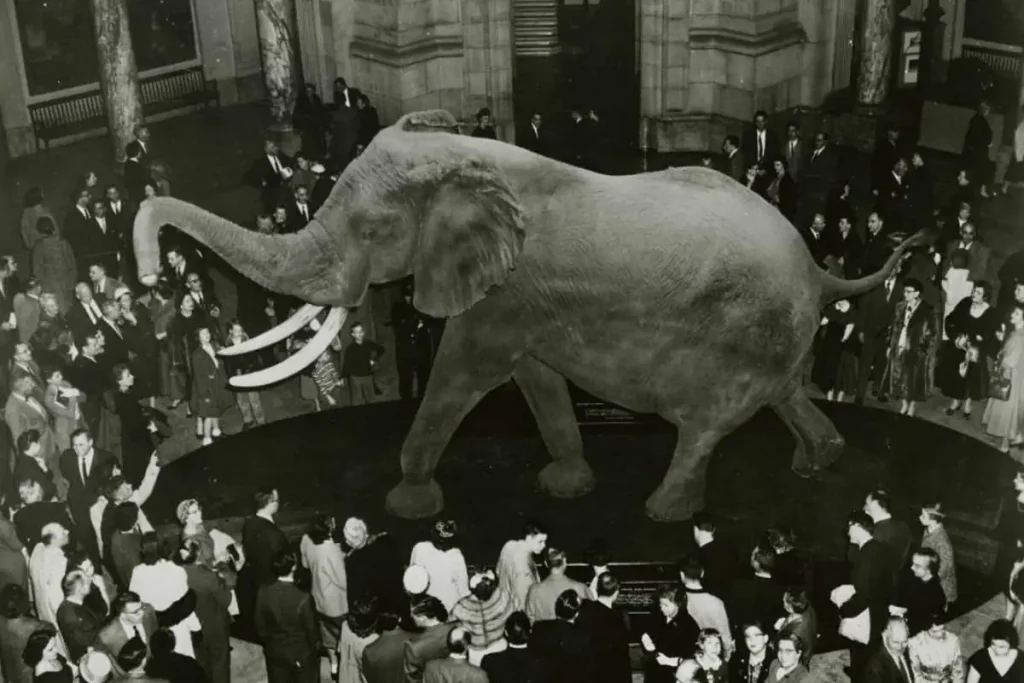
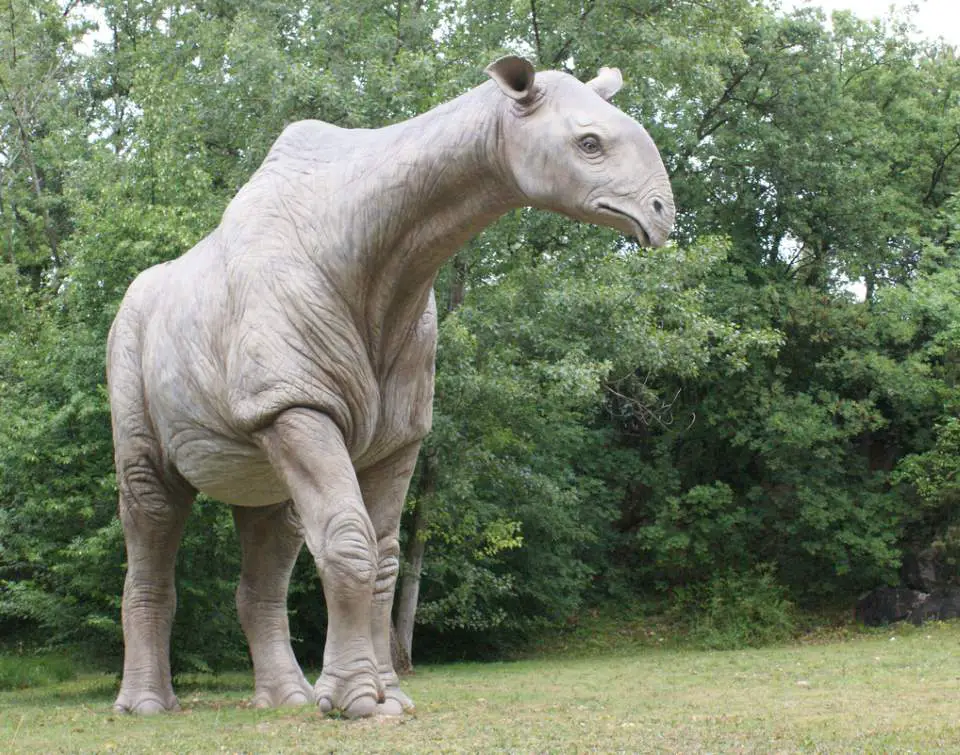
Related: Largest prehistoric mammals
2. There are three different species of elephant
There are three different species of elephant: the African bush elephant (also known as the African savannah elephant, Loxodonta africana), the African forest elephant (Loxodonta cyclotis), and the Asian elephant (Elephas maximus).
The African forest elephant is the smallest of those three species, reaching a shoulder height of 2.4 meters (7 feet and 10 inches). It was long considered to be a subspecies of the African elephant. But new research (morphological and DNA analysis) showed that they are actually a separate species entirely.
3. A baby elephant is the biggest baby born on land
African bush elephant calves, when born, are around 90 cm (3 feet) in height. Captive-born calves measured between 100-120 kg (220 -260 lb) at birth. They gain about 0.5 kg (1.1 lb) weight per day.
4. Elephant tusks never stop growing
Big tusks can be a sign of an old elephant.
Both male and female African elephants grow tusks, but only male Asian elephants grow them. A tuskless adult elephant is likely to be a female Asian elephant.
Elephant tusks have a variety of uses: as a tool to dig for food or water and to strip bark from trees; as a weapon in battles with rivals; and as a courtship aid – the larger his tusks, the more attractive a male elephant may appear to a female.
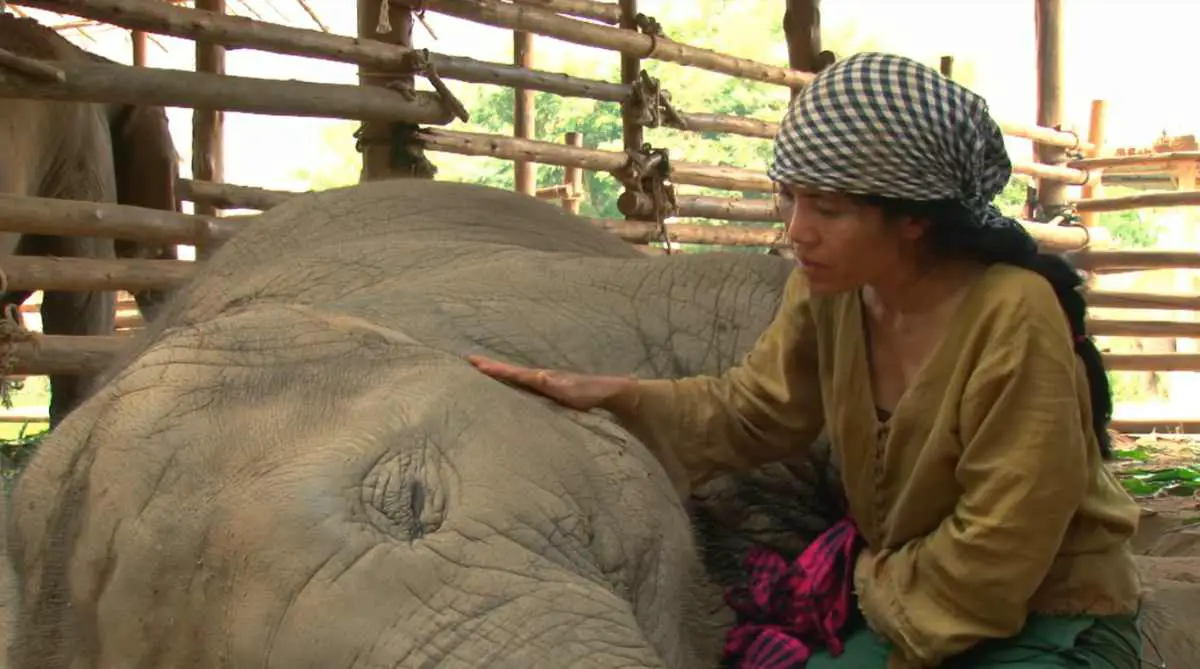
Related: Lullaby to the Snoring Elephant
5. They eat and drink a lot
Elephants are herbivores. They spend between 12 to 18 hours eating grass, plants, and fruit every single day. An adult elephant can eat about 50 tonnes of food in a year.
They also drink 180-230 liters (40-50 imp gal; 50-60 U.S. gal) of water daily. That’s why they prefer places near water – one of the main reasons for human-elephant conflicts.
6. Elephants are known for their incredible memory
Elephants possibly have cognitive maps to allow them to remember large-scale spaces over long periods. Individuals appear to be able to keep track of the current location of their family members – a knowledge so vital for their survival.
7. African elephants have big ears
The ears of African Elephants can reach up to 1.5 meters (5 feet) long. When flapped, they act as big fans, cooling the blood that runs close to the surface behind their ears.
Asian elephants have smaller ears than African elephants.
8. Elephants live in herds
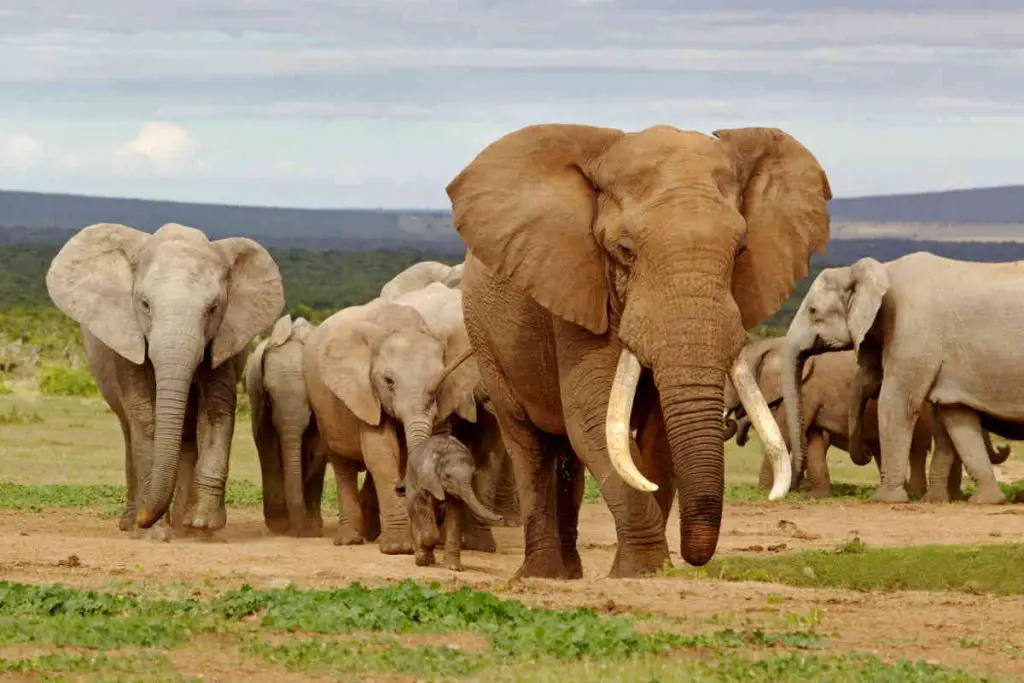
Elephants live in herds, which are highly organized social groups of 6-20 elephants led and guided by an older female leader, called a matriarch.
As the leader of the herd, a matriarch will make all the decisions for the herd – including what to eat, where to sleep, and where to go.
A new calf is usually the center of attention for herd members. Adults and most of the other young will gather around the newborn, touching and caressing it with their trunks.
9. They walk at the pace of the slowest member of their herds
They walk with infants surrounded by nurturing members of the herd, and their young babies are always protected from threats – not only hunters but also the wind, the rain, and the sun.
10. Mothers nurse their calves for about 4 years
Although they do start to eat vegetation at just a few months of age, during the nursing period, infant elephants are milk-dependent and cannot live more than a few weeks without milk.
11. Their trunk is so sensitive but too strong at the same time
Elephant trunks are actually a fusion of their nose and upper lip. It is manipulated by about 40-60,000 muscles. They have multiple functions, including breathing, olfaction (chemoreception that forms the sense of smell), touching, grasping, and sound production.
It is so strong – it can lift up to 350 kg (770 lb). It is also so sensitive, can be used for delicate tasks, such as wiping an eye and checking an orifice, and is capable of cracking a peanut shell without breaking the seed.
Furthermore, elephant trunks suck up water at speeds of 540 kilometers per hour! (335.5 mph!)
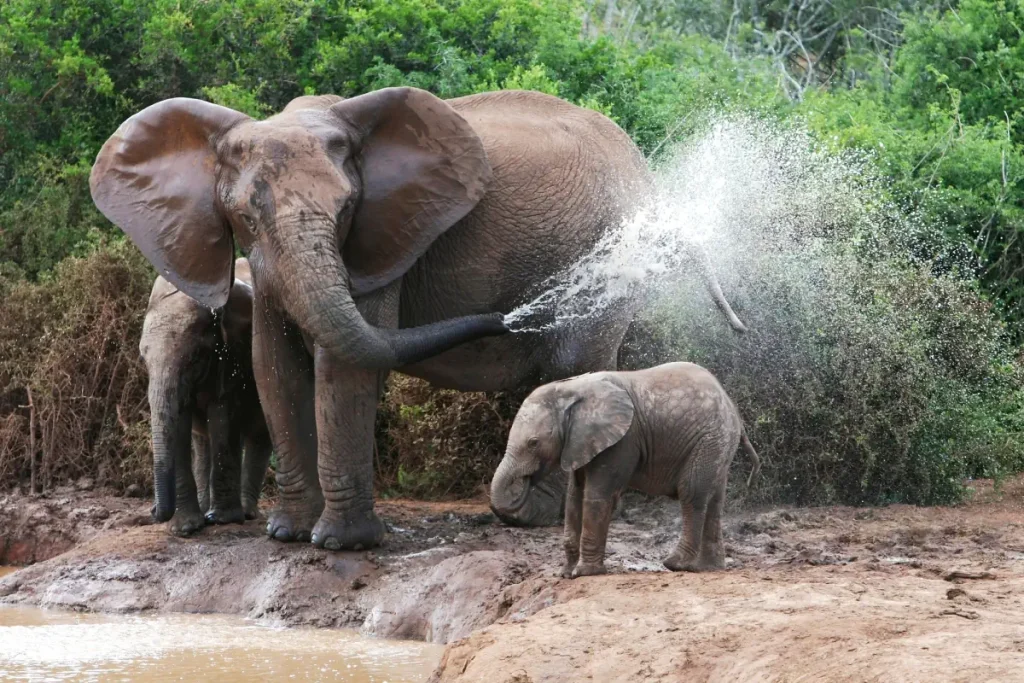
12. Their skin is too strong
An elephant’s skin is generally very tough, at 2.5 cm (1 in) thick on the back and parts of the head.
13. Elephants have big brains, and they are so smart!
Elephants are exceptionally smart and intelligent creatures. They have the largest brain of any land animal and three times as many neurons as humans. While many of these neurons exist to control the elephant’s large and dexterous body, these creatures have demonstrated their impressive mental capabilities time and time again.
The brain of an elephant weighs 4.5-5.5 kg (10-12 lb) compared to 1.4 kg (3 lb) for an average human brain. But, obviously, it is proportionally smaller.
A few interesting facts about the intelligence of elephants:
- They can identify human languages
- They can use tools (see the video below)
- They can understand human body language.
- They show empathy. An elephant comforts one another when distressed by stroking one another with their trunks and emitting small chirps. The study concluded this behavior is “best classified with similar consolation responses by apes, possibly based on convergent evolution of empathic capacities.”
- Elephants mourn their dead.
- They mimic human voices.
14. They can communicate in many ways
Elephants communicate with a range of vocalizations, from low-frequency rumbles, known as infrasound, which humans can’t hear, to higher-pitched screams and trumpets. Other elephants can hear these vocalizations as much as 10 km (6 miles) away. This allows them to keep in touch when apart and also enables them to recognize if an elephant is a friend. If not, they gather together for protection.
Perhaps their most well-known call is the trumpet which is made by blowing through the trunk. Trumpeting is made during excitement, distress, or aggression.
Touching is an important form of communication among elephants. Individuals greet each other by stroking or wrapping their trunks; the latter also occurs during mild competition.
Older elephants use trunk slaps, kicks, and shoves to discipline younger ones. Individuals of any age and sex will touch each other’s mouths, temporal glands, and genitals, particularly during meetings or when excited. This allows individuals to pick up chemical cues.
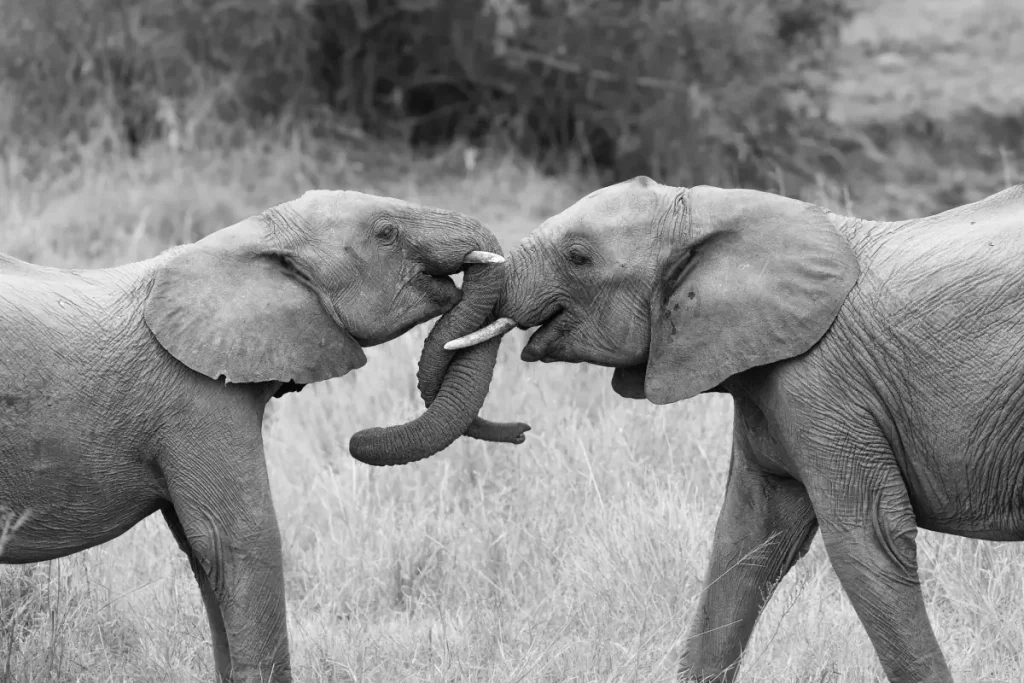
Touching is especially important for mother-calf communication. When moving, elephant mothers will touch their calves with their trunks or feet side-by-side or with their tails if the calf is behind them. If a calf wants to rest, it will press against its mother’s front legs and when it wants to suckle, it will touch her breast or leg.
Elephants also use visual displays to communicate. They try to appear more threatening by raising their heads and spreading their ears. They may add to the display by shaking their heads and snapping their ears, as well as throwing dust and vegetation. They are usually bluffing when performing these actions.
Excited elephants may raise their trunks. Submissive ones will lower their heads and trunks, as well as flatten their ears against their necks, while those who accept a challenge will position their ears in a V shape.
15. Elephants are keystone species
This means without them, entire ecosystems would look dramatically different or cease to exist. In the case of an elephant, their dietary habits and movements help control an ecosystem and create new habitats for other animals including antelopes, zebra, and wildebeest, as well as smaller animals and insects.
For instance, elephants can travel over 80 km (50 miles) a day and when it rains, their large footprints act as water collectors and serve as water sources for smaller animals. Elephants also pull up grass and bushes when they eat, making room for new plants to grow whilst they also spread plant seeds to new areas through their droppings (dung).
16. Elephants live long
They can live for 60-70 years.
Lin Wang, a captive male Asian elephant, lived for 86 years (1917-2003). He even served with the Chinese Expeditionary Force during the Second Sino-Japanese War (1937-1945). He lived out most of his life in the Taipei Zoo.
But it’s a myth that elephants can live hundreds of years and outlive their caretakers.

17. Elephants can recognize themselves in mirrors
This is considered an indication of self-awareness and cognition that has also been demonstrated in some apes and dolphins.
18. They can use tools
Elephants are among the species known to use tools. An Asian elephant has been observed modifying branches and using them as flyswatters. But, their tool modification is not as advanced as that of chimpanzees.
19. They have a slow pulse rate
When standing, the elephant’s heart beats approximately 25-35 times per minute. For comparison, an average human’s heart beats about 80 times per minute.
The smallest known mammal by mass, the Etruscan shrew has a very fast heart beating rate, up to 1511 beats/min (25 beats/s) – probably the highest pulse rate in all animals.
Unlike many other animals, the heart rate speeds up by 8 to 10 beats per minute when the elephant is lying down. A possible reason for that is: that the weight of the animal in the recumbent position reduces tidal respiratory volume; the compensatory mechanism is to increase heart rate.
20. They can’t jump
Elephants are incapable of jumping, but these massive mammals can run at a maximum speed of 25 miles (40 km) per hour. Yet even when they are moving at their fastest, they still keep at least one foot on the ground at all times – so, technically, it’s not “running”.
Fun video: baby elephant chasing birds
Some Not-So-Amazing Elephant Facts
African elephants were listed as vulnerable by the International Union for Conservation of Nature (IUCN) in 2008. The poaching of elephants for their ivory, meat, and hides has been one of the major threats to their existence. Other threats include habitat loss (elephants need larger amounts of land than other sympatric terrestrial mammals) and fragmentation.
Human activity such as land conversion (building roads, etc) limits animals’ ability to migrate, find mates, food, etc. They also divide wildlife populations into smaller ones, which causes a “genetic bottleneck” that results in inbreeding, which detrimentally impacts species’ survival.
The consequences of such a genetic bottleneck might include a low sperm count, decreased sperm motility, and susceptibility to disease.
Especially the Asian elephant lives in areas with some of the highest human populations.
Please, do not ever buy ivory or other wildlife-related products.
Notes
- World Elephant Day is an international annual event on August 12, dedicated to the preservation and protection of the world’s elephants. The inaugural World Elephant Day was launched on August 12, 2012, to bring attention to the urgent plight of Asian and African elephants.
Sources
- Elephant on Wikipedia
- African bush elephant on Wikipedia
- African forest elephant on Wikipedia
- Asian elephant on Wikipedia
- World Elephant Day official website
- “Meet Henry” (The largest elephant ever measured) on naturalhistory.si.edu
- “See the Elephant” on extinctmonsters.net
- 10 unforgettable elephant facts on the National Geographic Kids website
- Fun facts about African Elephants on the Sheldrick Wildlife Trust website
- Amazing elephant facts on the Discover Magazine website
- “Elephant trunks suck up water at speeds of 540 kilometers per hour” on the New Scientist website
- “7 behaviors that prove elephants are incredibly smart” on the Baanchang Elephant Park website
- Moon Landings: All-Time List [1966-2025] - February 2, 2025
- What Is Max-Q and Why Is It Important During Rocket Launches? - January 16, 2025
- Top 10 Tallest Rockets Ever Launched [2025 Update] - January 16, 2025


